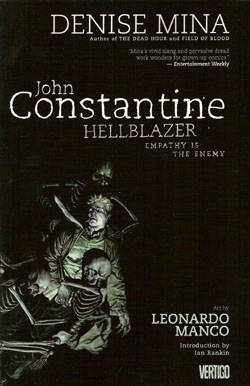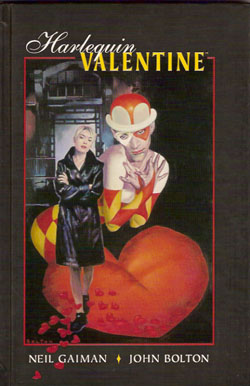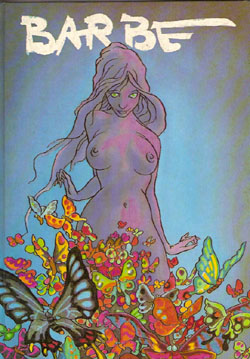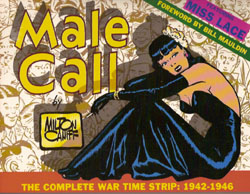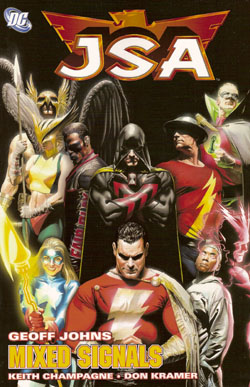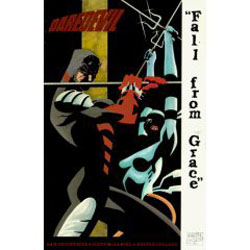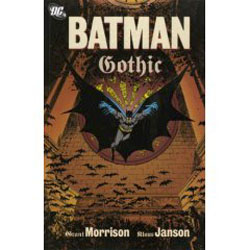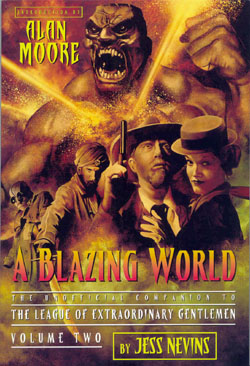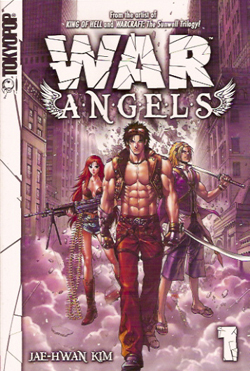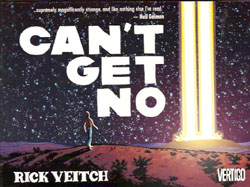
By Rick Veitch (Vertigo)
ISBN 1-4012-1059-7
The terrorist atrocity of September 11th, 2001 changed the world and in our own small corner, generated a number of graphic narrative responses of varying quality not to mention deep emotional honesty. Rick Veitch’s Can’t Get No is as powerful and heartfelt as any, but benefits also from a little time and distance.
Chad Roe’s company sold the world’s most permanent and indelible marker pen, the “Eter-No-Markâ€. Everyone was flying high but then the lawsuits hit all at once. A cheap, utterly irremovable felt-pen is a godsend to street-artists and the most virulent graffiti weapon to building owners. As his universe collapses on him Chad goes on a bender, picks up two hippie-artist-chicks in a bar and wakes up a human graffiti, covered literally from head to toe in swirling, organic, totally permanent designs.
Even then he tries so very hard to bounce back. A walking abstract artwork, he is ostracized by mockery, unable to conceal his obvious “othernessâ€, and neither self-help philosophies, drugs, nor alcohol can make him feel normal again. Defeated, reviled and ultimately spiritually crushed, trapped in a downward spiral, he meets the girls again and find solace and uncomplicated joy in the artist’s world of sex, booze and dope. Lost to “normal†society, he goes on a road-trip with the women but they haven’t even left the city before they’re arrested. It is morning on September 11th. As the girls violently resist the policemen an airplane flies overhead, straight towards the centre of Manhattan…
With no-one looking at him, just another part of the shocked crowd, he watches for an eternity, and then no longer anything but another stunned mortal, he drives away with an Arab family in their mobile home.
And thus begins a psychedelic, introspective argosy through America’s philosophy, symbolism and meta-physicality. With this one act of terrorism changing the nation, Chad is forced on a journey of discovery to find an America that is newborn both inside and out. His travels take him through vistas of predictable cruelty and unexpected tolerance, through places both eerily symbolic and terrifyingly plebeian, but by the end of this modern Pilgrim’s Progress, both he and the world have adapted, accommodated and accepted.
Rick Veitch is a criminally undervalued creator, with a poet’s sensibilities and a disaffected Flower-Child’s perspectives informing a powerful social and creative consciousness – and conscience. Can’t Get No is landmark experiment in both form and content which deserves careful and repeated examination.
Black and white in a landscape format, and eschewing dialogue and personal monologues for ambient text (no word balloons or descriptive captions, just the words that the characters encounter such as signs, newspapers, faxes etc.) this graphic narrative screams out its differences to usual comic strip fare. But the truly magical innovation is the “text-trackâ€, a continual fluid, peroration of poetic statements that supply an evocative counterpoint to the visual component.
Satirical, cynical, strident: Lyricism employed for examination and introspection, in perhaps occasionally over-florid, but nonetheless moving and heartfelt free verse and epigrams don’t make this an easy read or a simple entertainment. They do make it a piece of work every serious consumer of graphic narrative should attempt.
© 2006 Rick Veitch. All Rights Reserved.
